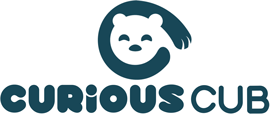17+
Introduction -
The hot topic seems to be potty training - but training is for animals and not young children. Often times people think it is best when 'you' tell your child when to go to the bathroom and research shows that is not recommended. Can you imagine only being able to pee when someone tells you to? What if you don't need to? Or what if you really have to go at a different time? Children should have ownership and be able to communicate when they need to go. Taking your child to pee every 45 minutes does more harm than good including UTIs, bladder infections and kidney problems. The other method, which is the 3 day training, is known to create stress, fear and anxiety.
In this article, you will read about a natural, stress-free way to support your child in using the bathroom. The Montessori approach recommends using the term ‘toilet learning’ because just like walking, using the bathroom should be a natural process when the child is ready and shouldn’t require training. Instead of picking your child up and making them pee on demand, having a conversation with them about toilet use and gentle reminders every hour is recommended.
When to start-
Montessorians believe that the sensitive period for toilet learning is 18 to 24 months.
At this age, children start to understand the elimination process, they have more bladder control and are capable of communicating when they need to go (whether it's using words or signs). This is a good time to make the switch from diapers to padded underwear. The advantage of using underwear instead of diapers is that it allows children to feel the wetness which makes them aware as opposed to super absorbent diapers. Yes, accidents will happen, but just like anything else, we need to embrace it.
A prepared adult
Along with the child, the adult needs to be ready to start this process too. It is not a quick method and may take months. There will be messes and soiled clothes. Your sheets might need frequent changes due to night accidents as well. Waking your child up to use the bathroom at night is not recommended, we want our children to gain bladder control & waking them up to pee is not only disrupting their sleep, but also hindering their ability to develop bladder control. So put an absorbent sheet under your child, just in case of an accident helps, to protect the sheets & mattress.
A prepared environment
In order to start this process, it is crucial to have a prepared environment. Here are some items to have in your bathroom before starting the process.
1. Potty Seat - The less fuss the better - No cushioning or lights or sound, easy to clean, light weight and neutral in color.
2. Books - You can buy books about using the potty or books your child loves to read to create a safe space. A mix of both kinds of books is ideal.
3. Step stool - Adding a step stool to the bathroom environment not only enables your child to use the potty independently, but also supports them to reach the sink while brushing and hand washing.
Creating awareness
Start creating awareness about the elimination process as well as excitement in the bathroom. Your child might want to sit on the pot even when they don’t need to go. Talk about the natural elimination process and how everybody does it, even animals! Refrain from using any rewards or punishments. There are several books about going to the bathroom (see list below).
Using your child’s dolls and stuffed animals to create a pretend play setup can be beneficial - you can even have a pretend potty to show how the doll uses the potty, wipes and washes her hands.
Benefits of starting early
🚽 Allows children to be intrinsically motivated instead of focusing on rewards
🚽 It is a gentle & natural process
🚽 Creates body awareness & gives ownership
🚽 No harsh punishment or threats required
🚽 Embarrassment, fear & anxiety avoided
What to say when your child has an accident
- I noticed you had an accident, would you like to change?
- You’ve been working so hard to use the potty
- Let’s read this book together and remind ourselves what bear does.
- If you need to go again, remember to go to the bathroom
- Poop goes in the potty and not in your pants, come let’s go together.
- You’re learning and I am here to help you.
Depending on your context and the space you may have, you can also create a self-care station that your child can access independently. Here is what a self-care station might have
- A mirror at child’s height enables the child to look at themselves at any time and not depend on an adult to lift them up
- Hooks that your child can reach to hang up the towel and clothes
- Low shelves for self-care belongings including toothbrush and paste, hair brush and lotion
- A floor potty and toilet paper or a step stool to access the regular potty
- A step stool for things like the light switch that cannot be moved lower
Here is a list of books to support your child in this process
- Everybody poops
- P is for potty
- Diapers are not forever
- On your potty
